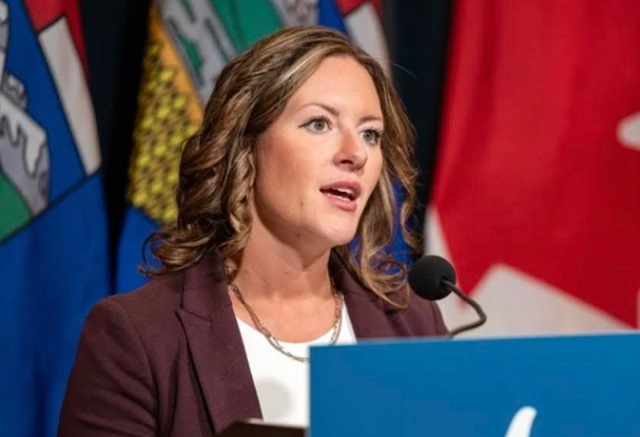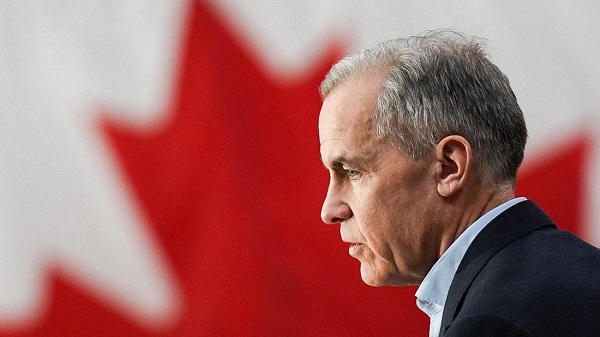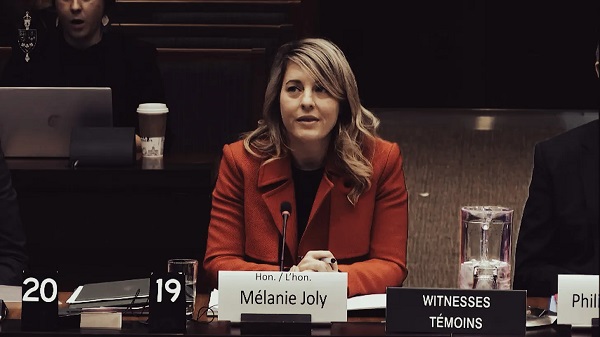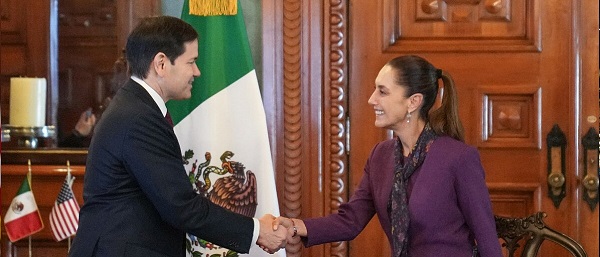Alberta
Emissions cap “will not be tolerated in Alberta” – Letter to Environment Minister Guilbeault

Dear Minister Steven Guilbeault,
The federal government’s draft Regulatory Framework to Cap Oil and Gas Sector Greenhouse Gas Emissions represents a de facto production cap on Alberta’s oil and gas sector. This cap is not realistic or effective, will not achieve its grandiose emissions targets, and will not be tolerated in Alberta.
Today, Alberta is efficiently and effectively regulating and driving emissions from all industrial sectors, including oil and gas, and has been doing so successfully for decades. Our technical submission outlines how your proposed oil and gas emissions cap will undercut this work, and the severe consequences that it will impose on Albertans and all Canadians.
In no way does Alberta’s technical submission alter our province’s position that the proposed emissions cap is unconstitutional. As set out in Section 92A of the Constitution Act, 1867, Alberta has exclusive jurisdiction to manage the rate of non-renewable natural resources production and operational aspects of their development in our province.
If implemented, this cap would have a devastating impact on the economies of Alberta and all of Canada. Analysis from the Conference Board of Canada shows that it would reduce Canada’s GDP by up to $1 trillion between 2030 and 2040 and create up to 151,000 lost jobs across Canada by 2030. Oil and gas production would be curtailed, tens of thousands could be out of work, and the economic impact would be felt from coast to coast.
We have identified an overwhelming number of flaws in your government’s proposed framework. For example, your assumed production forecasts – which form the basis of the cap – are from 2019. Alberta’s total oil and natural gas production has already risen past 2019 levels, and multiple forecasts project oil sands production to increase significantly by 2030. Similarly, the technologies needed to massively abate emissions in the oil and gas sector either don’t yet exist or aren’t being developed at the rate and scale that your modelling requires.
Many of these technologies and investments are supported by Alberta and will eventually deliver real and sustained reductions, but not by 2030. As well, our submission clearly demonstrates that:
• The proposed cap would violate Section 92A of the Constitution, and result in oil and gas production cuts and shut-ins in Alberta.
• It is based on a flawed regulatory framework and policy design that is ineffective, inefficient and will not produce the intended emission reductions.
• The proposed cap will negatively impact Alberta’s economy, as well as the economies of provinces and territories across the country, including the Canadian economy overall.
• It will undercut Canada’s competitiveness and drastically reduce investments in clean technologies like carbon capture, which are critical to meaningfully reducing emissions in the coming years.
• It is unnecessary and will undermine effective provincial-led decarbonizing approaches and initiatives already underway or proposed in Alberta and across Canada.
• It will lead to carbon leakage, with oil and gas production and greenhouse gas emissions increasing in other countries with less robust environmental and human rights standards.
Alberta is confident that the many of issues raised in this document are shared by other provinces and industry leaders, both within the oil and gas sector and beyond.
All greenhouse gas emissions have the same global impact, regardless of the sector or region in which they are produced. Instead of pursuing this unconstitutional cap, we are calling on your government to immediately halt further development and begin meaningful collaboration within established provincial regulatory regimes on oil and gas regulation and emissions reductions.
Alberta would welcome federal investment to help the oil and gas industry – and other industries – advance and adopt technology to reduce emissions to support our goals of carbon neutrality by 2050.
Alberta aspires to achieve a carbon neutral economy without compromising affordable, reliable, and secure energy for Alberta, Canada and the world. We know this relies on and requires investment to advance clean technology solutions.
We invite you to join us in implementing our Emissions Reduction and Energy Development Plan to achieve carbon neutrality while continuing the development of Alberta’s world-class natural energy resources for Canada and the world.
Sincerely,
Rebecca Schulz
Minister of Environment and Protected Areas
Alberta
Alberta government’s plan will improve access to MRIs and CT scans

From the Fraser Institute
By Nadeem Esmail and Tegan Hill
The Smith government may soon allow Albertans to privately purchase diagnostic screening and testing services, prompting familiar cries from defenders of the status quo. But in reality, this change, which the government plans to propose in the legislature in the coming months, would simply give Albertans an option already available to patients in every other developed country with universal health care.
It’s important for Albertans and indeed all Canadians to understand the unique nature of our health-care system. In every one of the 30 other developed countries with universal health care, patients are free to seek care on their own terms with their own resources when the universal system is unwilling or unable to satisfy their needs. Whether to access care with shorter wait times and a more rapid return to full health, to access more personalized services or meet a personal health need, or to access new advances in medical technology. But not in Canada.
That prohibition has not served Albertans well. Despite being one of the highest-spending provinces in one of the most expensive universal health-care systems in the developed world, Albertans endure some of the longest wait times for health care and some of the worst availability of advanced diagnostic and medical technologies including MRI machines and CT scanners.
Introducing new medical technologies is a costly endeavour, which requires money and the actual equipment, but also the proficiency, knowledge and expertise to use it properly. By allowing Albertans to privately purchase diagnostic screening and testing services, the Smith government would encourage private providers to make these technologies available and develop the requisite knowledge.
Obviously, these new providers would improve access to these services for all Alberta patients—first for those willing to pay for them, and then for patients in the public system. In other words, adding providers to the health-care system expands the supply of these services, which will reduce wait times for everyone, not just those using private clinics. And relief can’t come soon enough. In Alberta, in 2024 the median wait time for a CT scan was 12 weeks and 24 weeks for an MRI.
Greater access and shorter wait times will also benefit Albertans concerned about their future health or preventative care. When these Albertans can quickly access a private provider, their appointments may lead to the early discovery of medical problems. Early detection can improve health outcomes and reduce the amount of public health-care resources these Albertans may ultimately use in the future. And that means more resources available for all other patients, to the benefit of all Albertans including those unable to access the private option.
Opponents of this approach argue that it’s a move towards two-tier health care, which will drain resources from the public system, or that this is “American-style” health care. But these arguments ignore that private alternatives benefit all patients in universal health-care systems in the rest of the developed world. For example, Switzerland, Germany, the Netherlands and Australia all have higher-performing universal systems that provide more timely care because of—not despite—the private options available to patients.
In reality, the Smith government’s plan to allow Albertans to privately purchase diagnostic screening and testing services is a small step in the right direction to reduce wait times and improve health-care access in the province. In fact, the proposal doesn’t go far enough—the government should allow Albertans to purchase physician appointments and surgeries privately, too. Hopefully the Smith government continues to reform the province’s health-care system, despite ill-informed objections, with all patients in mind.
Alberta
Canada’s heavy oil finds new fans as global demand rises

From the Canadian Energy Centre
By Will Gibson
“The refining industry wants heavy oil. We are actually in a shortage of heavy oil globally right now, and you can see that in the prices”
Once priced at a steep discount to its lighter, sweeter counterparts, Canadian oil has earned growing admiration—and market share—among new customers in Asia.
Canada’s oil exports are primarily “heavy” oil from the Alberta oil sands, compared to oil from more conventional “light” plays like the Permian Basin in the U.S.
One way to think of it is that heavy oil is thick and does not flow easily, while light oil is thin and flows freely, like fudge compared to apple juice.
“The refining industry wants heavy oil. We are actually in a shortage of heavy oil globally right now, and you can see that in the prices,” said Susan Bell, senior vice-president of downstream research with Rystad Energy.
A narrowing price gap
Alberta’s heavy oil producers generally receive a lower price than light oil producers, partly a result of different crude quality but mainly because of the cost of transportation, according to S&P Global.
The “differential” between Western Canadian Select (WCS) and West Texas Intermediate (WTI) blew out to nearly US$50 per barrel in 2018 because of pipeline bottlenecks, forcing Alberta to step in and cut production.
So far this year, the differential has narrowed to as little as US$10 per barrel, averaging around US$12, according to GLJ Petroleum Consultants.
“The differential between WCS and WTI is the narrowest I’ve seen in three decades working in the industry,” Bell said.
Trans Mountain Expansion opens the door to Asia

Oil tanker docked at the Westridge Marine Terminal in Burnaby, B.C. Photo courtesy Trans Mountain Corporation
The price boost is thanks to the Trans Mountain expansion, which opened a new gateway to Asia in May 2024 by nearly tripling the pipeline’s capacity.
This helps fill the supply void left by other major regions that export heavy oil – Venezuela and Mexico – where production is declining or unsteady.
Canadian oil exports outside the United States reached a record 525,000 barrels per day in July 2025, the latest month of data available from the Canada Energy Regulator.
China leads Asian buyers since the expansion went into service, along with Japan, Brunei and Singapore, Bloomberg reports. 
Asian refineries see opportunity in heavy oil
“What we are seeing now is a lot of refineries in the Asian market have been exposed long enough to WCS and now are comfortable with taking on regular shipments,” Bell said.
Kevin Birn, chief analyst for Canadian oil markets at S&P Global, said rising demand for heavier crude in Asia comes from refineries expanding capacity to process it and capture more value from lower-cost feedstocks.
“They’ve invested in capital improvements on the front end to convert heavier oils into more valuable refined products,” said Birn, who also heads S&P’s Center of Emissions Excellence.
Refiners in the U.S. Gulf Coast and Midwest made similar investments over the past 40 years to capitalize on supply from Latin America and the oil sands, he said.
While oil sands output has grown, supplies from Latin America have declined.
Mexico’s state oil company, Pemex, reports it produced roughly 1.6 million barrels per day in the second quarter of 2025, a steep drop from 2.3 million in 2015 and 2.6 million in 2010.
Meanwhile, Venezuela’s oil production, which was nearly 2.9 million barrels per day in 2010, was just 965,000 barrels per day this September, according to OPEC.
The case for more Canadian pipelines

Worker at an oil sands SAGD processing facility in northern Alberta. Photo courtesy Strathcona Resources
“The growth in heavy demand, and decline of other sources of heavy supply has contributed to a tighter market for heavy oil and narrower spreads,” Birn said.
Even the International Energy Agency, known for its bearish projections of future oil demand, sees rising global use of extra-heavy oil through 2050.
The chief impediments to Canada building new pipelines to meet the demand are political rather than market-based, said both Bell and Birn.
“There is absolutely a business case for a second pipeline to tidewater,” Bell said.
“The challenge is other hurdles limiting the growth in the industry, including legislation such as the tanker ban or the oil and gas emissions cap.”
A strategic choice for Canada
Because Alberta’s oil sands will continue a steady, reliable and low-cost supply of heavy oil into the future, Birn said policymakers and Canadians have options.
“Canada needs to ask itself whether to continue to expand pipeline capacity south to the United States or to access global markets itself, which would bring more competition for its products.”
-

 Brownstone Institute2 days ago
Brownstone Institute2 days agoBizarre Decisions about Nicotine Pouches Lead to the Wrong Products on Shelves
-

 Agriculture1 day ago
Agriculture1 day agoDanish Cows Collapsing Under Mandatory Methane-Reducing Additive
-

 Alberta1 day ago
Alberta1 day agoAlberta government’s plan will improve access to MRIs and CT scans
-

 Business2 days ago
Business2 days agoCarney government’s first budget should signal end to crippling ‘climate’ policies
-

 Business2 days ago
Business2 days agoTrump’s Tariffs Have Not Caused Economy To Collapse
-

 Health2 days ago
Health2 days agoRFK Jr’s argument for studying efficacy of various vaccines
-

 Business1 day ago
Business1 day agoNo Jobs Clause: Liberals Under Fire Over Stellantis Deal in Fiery Committee Showdown
-

 Daily Caller2 days ago
Daily Caller2 days agoTrump Reportedly Planning Ground Troops, Drone Strikes On Cartels In Mexico









